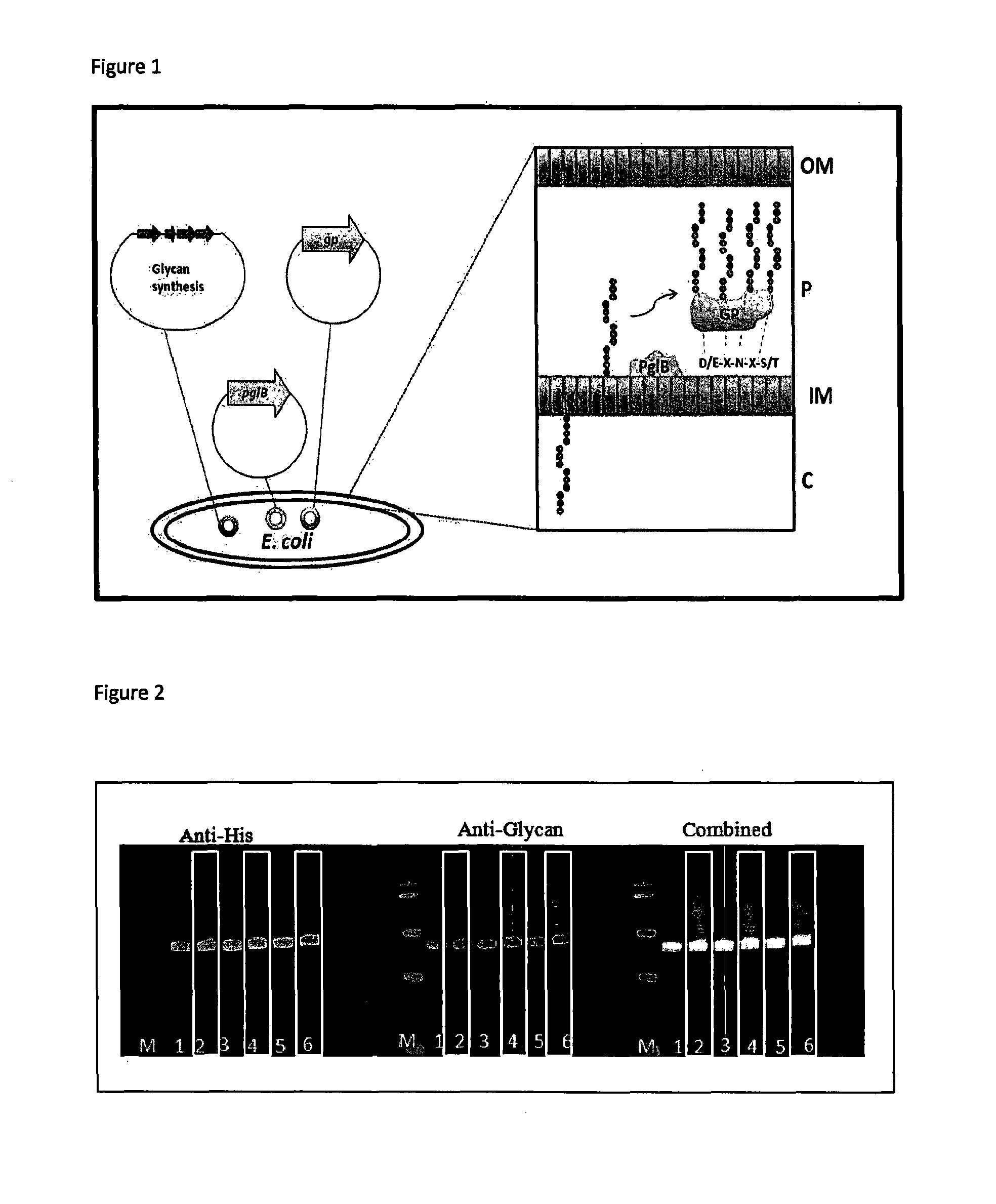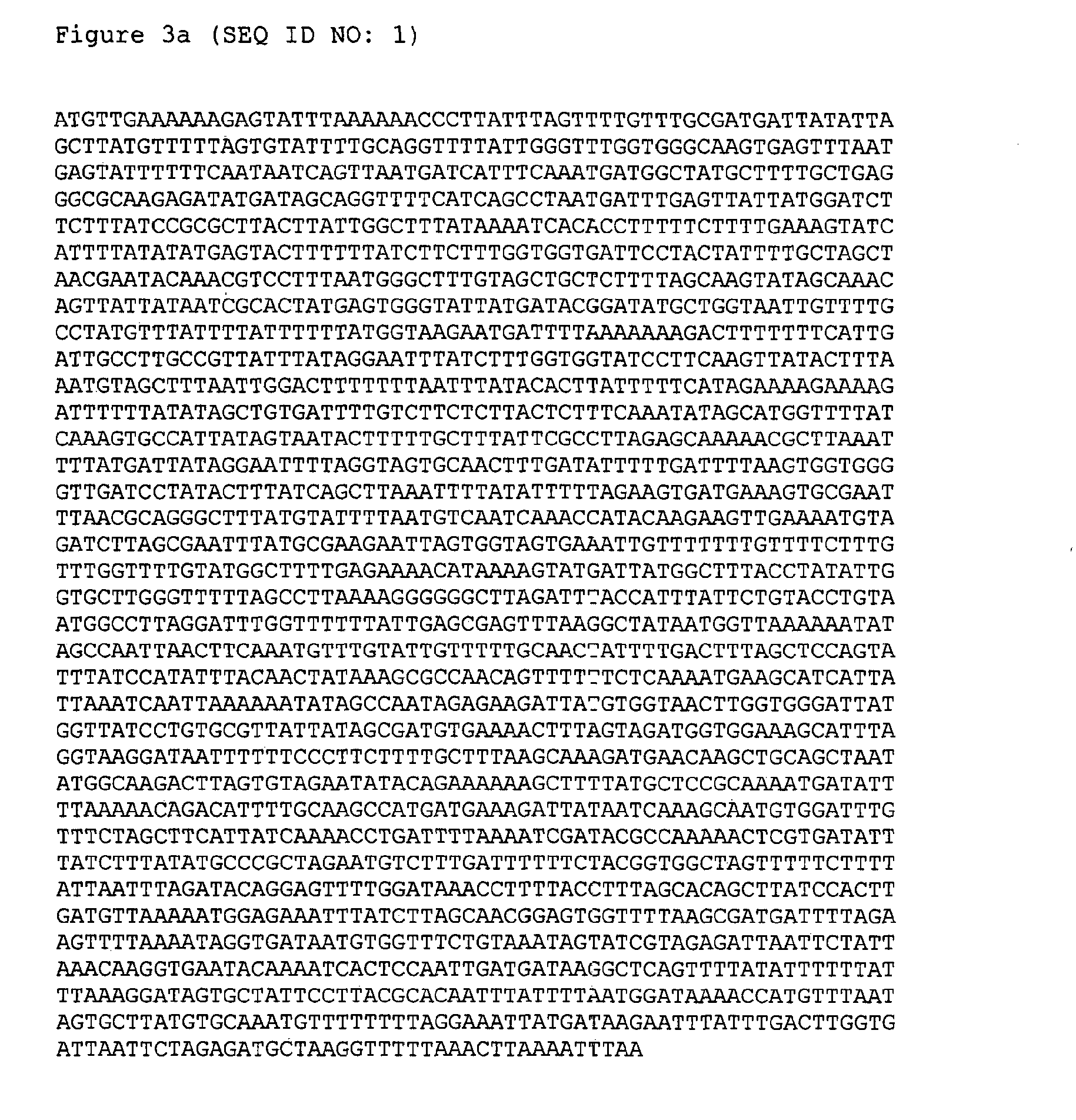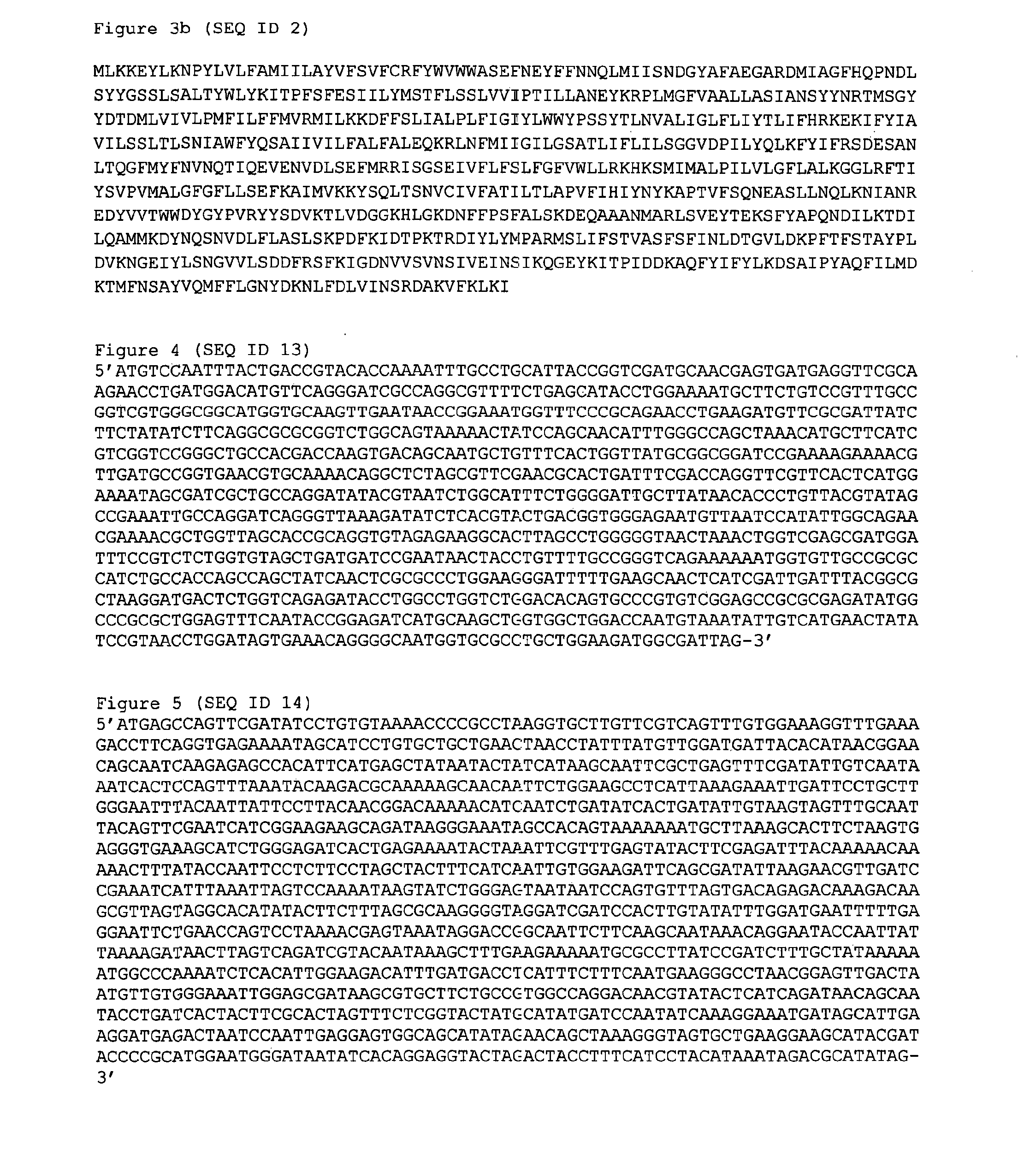Glycosylation method
a glycoconjugate and plasmid technology, applied in the field of glycosylation method, can solve the problems of limited immune response independent of t cells, high cost and difficulty in production, and low yield of glycoconjugates using such expression systems, and achieve the effect of maintaining the stability of plasmids
- Summary
- Abstract
- Description
- Claims
- Application Information
AI Technical Summary
Benefits of technology
Problems solved by technology
Method used
Image
Examples
example 2
[0155]We have used the transposon pJAN25 carrying an IPTG inducible copy of CjpglB to integrate this gene into the chromosomes of glycoengineering E. coli strains W3110, CLM24, CLM37, 5e874, SCM7, SCM6, SCM3.
example 3
[0156]We have used the transposon pJAN25 carrying an IPTG inducible copy of CjpglB to integrate this gene into the chromosomes of the following organisms: Vibrio cholerae, Yersinia pseudotuberculosis, Citrobacter freundii, Actinobacillus pleuropneumoniae. In the case of Vibro cholerae and Actinobacillus pleuropneumoniae the standard glycoengineering plasmids used in the tri-plasmid system could not be normally maintained in these organisms.
example 4
[0157]pJCUSA1 has been used to generate a transposon with an IPTG inducible copy of CjpglB and a Zeocin® resistance cassette flanked by loxP recombination sites. This was delivered into a recipient E. coli strain by conjugation. This strain can be cured of Zeocin® resistance by the introduction of a CRE recombinase coding plasmid that has a temperature sensitive origin of replication leading to an unmarked E. coli strain capable of generating a glycoconjugate. This is illustrated in FIG. 7. The method is used to generate an unmarked chromosomal insertion of the oligosaccharyltransferase coding gene pglB which is exemplified by glycosylation of an acceptor protein.
PUM
| Property | Measurement | Unit |
|---|---|---|
| Fraction | aaaaa | aaaaa |
| Electrical resistance | aaaaa | aaaaa |
| Content | aaaaa | aaaaa |
Abstract
Description
Claims
Application Information
 Login to View More
Login to View More - R&D
- Intellectual Property
- Life Sciences
- Materials
- Tech Scout
- Unparalleled Data Quality
- Higher Quality Content
- 60% Fewer Hallucinations
Browse by: Latest US Patents, China's latest patents, Technical Efficacy Thesaurus, Application Domain, Technology Topic, Popular Technical Reports.
© 2025 PatSnap. All rights reserved.Legal|Privacy policy|Modern Slavery Act Transparency Statement|Sitemap|About US| Contact US: help@patsnap.com



